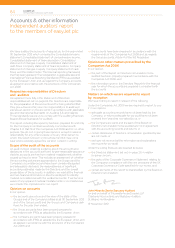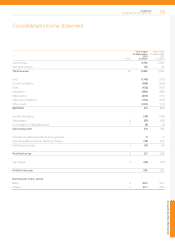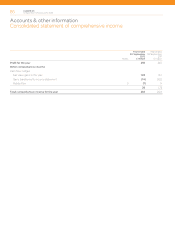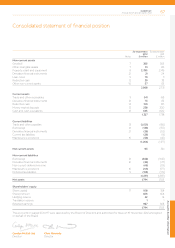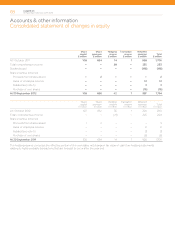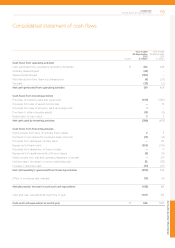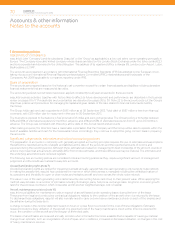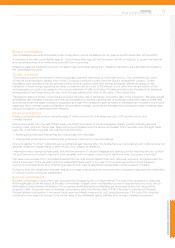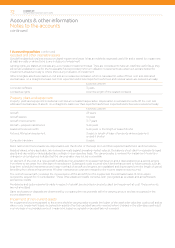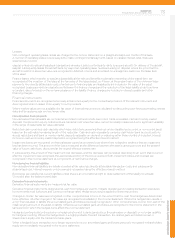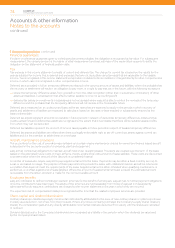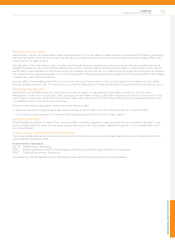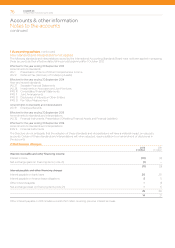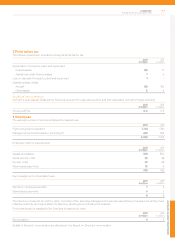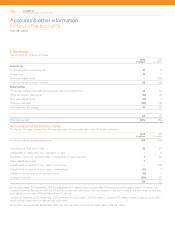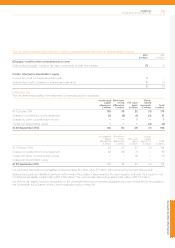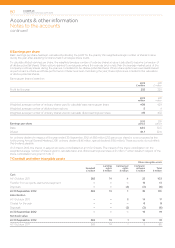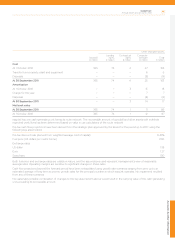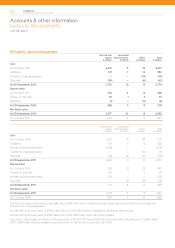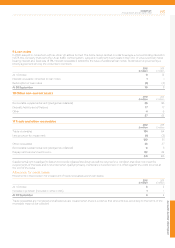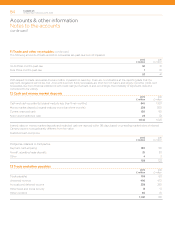EasyJet 2012 Annual Report Download - page 76
Download and view the complete annual report
Please find page 76 of the 2012 EasyJet annual report below. You can navigate through the pages in the report by either clicking on the pages listed below, or by using the keyword search tool below to find specific information within the annual report.
Accounts & other information
Notes to the accounts
continued
1 Accounting policies continued
Financial guarantees
If a claim on a financial guarantee given to a third-party becomes probable, the obligation is recognised at fair value. For subsequent
measurement, the carrying amount is the higher of initial measurement and best estimate of the expenditure required to settle the
obligation on the statement of financial position date.
Tax
Tax expense in the income statement consists of current and deferred tax. The charge for current tax is based on the results for the
year as adjusted for income that is exempt and expenses that are not deductible using tax rates that are applicable to the taxable
income. Tax is recognised in the income statement except when it relates to items credited or charged directly to other comprehensive
income, in which case it is recognised in other comprehensive income.
Deferred tax is provided in full on temporary differences relating to the carrying amount of assets and liabilities, where it is probable that
the recovery or settlement will result in an obligation to pay more, or a right to pay less, tax in the future, with the following exceptions:
→where the temporary difference arises from goodwill or from the initial recognition (other than in a business combination) of other
assets and liabilities in a transaction that affects neither taxable income nor accounting profit.
→deferred tax arising on investments in subsidiaries is not recognised where easyJet is able to control the reversal of the temporary
difference and it is probable that the temporary difference will not reverse in the foreseeable future.
Deferred tax is measured on an undiscounted basis at the tax rates that are expected to apply in the periods in which recovery of
assets and settlement of liabilities are expected to take place, based on tax rates or laws enacted or substantively enacted at the
balance sheet date.
Deferred tax assets represent amounts recoverable in future periods in respect of deductible temporary differences, losses and tax
credits carried forward. Deferred tax assets are recognised to the extent that it is probable that there will be suitable taxable profits
from which they can be deducted.
Deferred tax liabilities represent the amount of income taxes payable in future periods in respect of taxable temporary differences.
Deferred tax assets and liabilities are offset when there is a legally enforceable right to set off current tax assets against current tax
liabilities and it is the intention to settle these on a net basis.
Aircraft maintenance provisions
The accounting for the cost of providing major airframe and certain engine maintenance checks for owned and finance leased aircraft
is described in the accounting policy for property, plant and equipment.
easyJet has contractual obligations to maintain aircraft held under operating leases. Provisions are created over the term of the lease
based on the estimated future costs of major airframe checks, engine shop visits and end of lease liabilities. These costs are discounted
to present value where the amount of the discount is considered material.
A number of leases also require easyJet to pay supplemental rent to the lessor. Payments may be either a fixed monthly sum up to
a cap or are based on usage. The purpose of these payments is to provide the lessor with collateral should an aircraft be returned in
a condition that does not meet the requirements of the lease. Supplemental rent is either refunded when qualifying maintenance is
performed, or is offset against end of lease liabilities. Where the amount of supplemental rent paid exceeds the estimated amount
recoverable from the lessor, provision is made for the non-recoverable amount.
Employee benefits
easyJet contributes to defined contribution pension schemes for the benefit of employees. easyJet has no further payment obligations
once the contributions have been paid. The assets of the schemes are held separately from those of easyJet in independently
administered funds. easyJet’s contributions are charged to the income statement in the year in which they are incurred.
The expected cost of compensated holidays is recognised at the time that the related employees’ services are provided.
Share capital and dividend distribution
Ordinary shares are classified as equity. Incremental costs directly attributable to the issue of new ordinary shares or options are shown
in equity as a deduction, net of tax, from the proceeds. Where any Group company purchases the Company’s equity shares (treasury
shares) the consideration paid and any directly attributable incremental costs are deducted from equity until the shares are cancelled
or reissued.
Dividend distributions to the Company’s shareholders are recognised as a liability in the period in which the dividends are approved
by the Company’s shareholders.
easyJet plc
Annual report and accounts 2012
74


